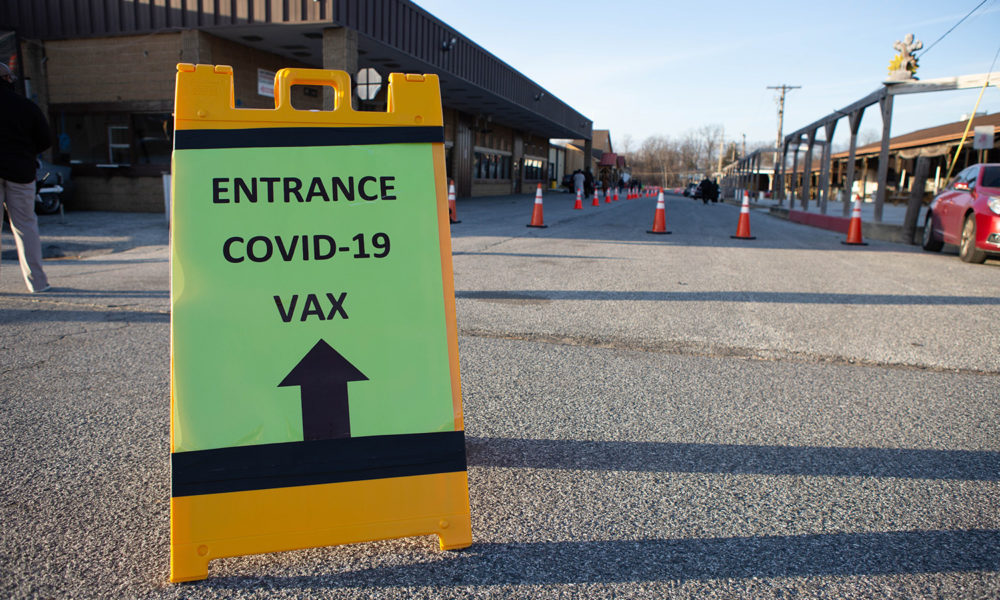Much has been written about the glaringly disproportionate impact of the coronavirus pandemic on racial and ethnic minorities. Black, Latino, and Native Americans are at least three times more likely to be hospitalized by COVID-19 and at least two times more likely to die from it than Whites, according to the Centers for Disease Control and Prevention.
On top of our country’s sorry history of discrimination, there are many reasons for this disparity, including the fact that racial and ethnic minorities are overrepresented in essential and frontline occupations where they work within close proximity to others, are paid less than Whites in those jobs, and are less likely to have health benefits, according to December 2020 Urban Institute report. They also are more likely to live in multigenerational households than Whites, which can lead to greater coronavirus transmission.
A rational approach to protecting the most vulnerable among us first would take these disparities into account. Unfortunately, that is not happening. So far, the distribution of COVID-19 vaccines has been upside-down. The 10 percent vaccination rate for Whites in 26 states reporting data in mid-February was more than three times the 3 percent rate for Latinos and double the 5 percent rate for Blacks, according to the Kaiser Family Fund.
This vaccination-rate mismatch is particularly acute in major metropolitan areas, and one of the best ways to fully understand the extent of the problem is through maps, which clearly show that neighborhoods with majority Black and Latino residents have higher coronavirus infection rates and lower vaccination rates than White majority neighborhoods.

Casey Kalman is a research associate with our Center for Science and Democracy. Prior to joining UCS, Casey was a public health research assistant at the George Washington University Milken Institute of Public Health, where she primarily worked to explore the relationship between air pollution, climate change, and human health.
Casey Kalman, a research associate at the Union of Concerned Scientists’ Center for Science and Democracy, recently produced distribution maps for Cleveland, Chicago, and Seattle and found a similar story in each city. To get a better idea of what is happening on the ground and what can be done about it, I recently exchanged emails with Kalman, who has a master’s degree in public health and a professional certificate in geographic information system (GIS) mapping and cartography.
EN: By coincidence, you mapped neighborhoods in Chicago, your hometown, and Cleveland, where I grew up. What is going on in those two Midwest cities? How are they representative of what is going on nationwide?
CK: Chicago and Cleveland are good examples of how place and race matters when it comes to health. In both cities, maps show that communities of color are not getting vaccinated at the same rate as their white neighbors even though they are among the hardest hit by the pandemic. In Chicago especially, the zip codes with the highest number of deaths per capita are the same zip codes with low rates of vaccinations. And this is what we are seeing across the country.
Chicago also is a prime example of a city where residents of predominantly White neighborhoods on the North Side are going to vaccination sites in predominantly Black neighborhoods on the West and South sides. Newspapers have been reporting the same story in cities across the country. These anecdotes are representative of the larger issue of unequal access to health care nationwide, not just COVID-related care.
EN: Maps are often used to show health data and it’s always interesting to see how a particular city stacks up against others, but what prompted you to analyze vaccination disparities with maps?
CK: More and more, public health advocates are recognizing that place matters. The zip code where you live often says more about your health than your medical records. It can tell how much access you have to liquor stores, if you can easily find healthy food for your family, and now it can tell us a lot about how hard it is for you to get vaccinated.
In highly segregated cities such as Chicago, maps can tell us a lot about how well a city or county is providing vaccines to the communities that need them most. By mapping this data, I can tell you that—in addition to the many other factors that are hindering Black Chicagoans from getting vaccinated—there are fewer vaccination sites on the predominantly Black South Side of the city than there are on the North Side. This points out a relatively straightforward way that the city can address the inequities we are seeing: add more sites in South Side.

Left: Dot Density map of race by census block group for the city of Chicago where 1 dot is representative of 5 people; Right: ‘Heat Map’ showing density of vaccination sites that are open to the community (i.e. not ‘patients only’ sites). The dark blue shows highest density of vaccination sites while light blue shows lower density of sites. Source: NHGIS IPUMS and Chicago Data Portal
EN: What are the main reasons for these vaccination-rate disparities?
CK: The reasons behind these disparities are complex. For a broader discussion of their historic roots, I would recommend reading the work of Adrienne Hollis, senior climate justice and health scientist at UCS; Mustafa Santiago Ali, vice president for environmental justice at the National Wildlife Federation; and Derrick Jackson, a former Boston Globe columnist who is now a UCS fellow. All of them have written extensively on this topic.
To understand this problem on a surface level, think about every little step, every hurdle, someone has to jump over to get vaccinated. If you have attained a certain economic status, they may be hurdles that you would never have to worry about.
First, you have to figure out if you’re eligible before you can even sign up for an appointment. This requires reliable internet access, as well as the time to poke around your local health department website to find information. Some people may not think that’s much of a problem at all, but if you don’t have reliable internet access, it is a huge issue. If you have a job where you don’t have flexible hours, or you take care of children or others during the day, you likely do not have a lot of time to do research online. If you do get an appointment, then you have to figure out how to get there in a reasonable amount of time. And if you’re working an hourly job, you may have to take unpaid time off to get vaccinated.
That is a lot to figure out and that’s only for one shot, let alone two! And this is assuming you have enough trust in the medical system to feel comfortable getting the shot in the first place.
EN: I’m White and relatively well-off, but I still had to jump through plenty of hoops to get a vaccination appointment. It was very frustrating. I had to log onto the District of Columbia government’s website at 9 a.m. on the dot, fill out a form, and then pick a place and time. The first three times I tried, I failed. All of the appointments were gone within 5 to 10 minutes. I also tried to call, but all I got was a busy signal. I lucked out my fourth time going online, but the community center where I secured an appointment is a half-hour away from where I live by car or subway.
CK: My dad and my roommate had similar experiences, and they both have health insurance, internet access, access to transportation, and flexible schedules. Just last week, my roommate—who is an essential worker—got her first shot but was struggling to find a time to get the second one. It seems like many people are not getting vaccinated because of technological or logistical issues. In D.C. for example, there have been major issues with the Health Department’s vaccination website, which crashed after it opened up appointments for more essential workers. It’s all so unacceptable in so many ways.
EN: Besides all of these obstacles, communities of color have a longstanding—and legitimate—distrust of the medical establishment.
CK: That’s right. The relationship between communities of color and the medical establishment is one of abuse, manipulation and discrimination. And just as it is with a toxic relationship, trust is close to impossible. When you place all of the hurdles we’ve mentioned within the context of the history of this country, you begin to get a better idea of why these disparities exist.
EN: What can be done ensure that the people suffering the most from the pandemic get proper attention? Are there any examples where cities or counties are doing a good job?
CK: At this point, I can’t think of a particular city or county that I can hold up as an example. What I can say is that community organizations—especially ones in majority Black and Latino neighborhoods—are doing what they have done for decades: taking matters into their own hands when their local government has failed. In Chicago, Cleveland, Seattle and I’m sure many other cities, nonprofit groups are working to make sure that their communities get vaccinated. Howard Brown Health in Chicago, Greater Cleveland Congregations in Cuyahoga County, Comunidad Latina de Vashon in Seattle, and the Black Doctors COVID-19 Consortium in Philadelphia are just a few examples. If the racial gap in vaccinations ever closes, it will be because these organizations are stepping up to care for their communities.

